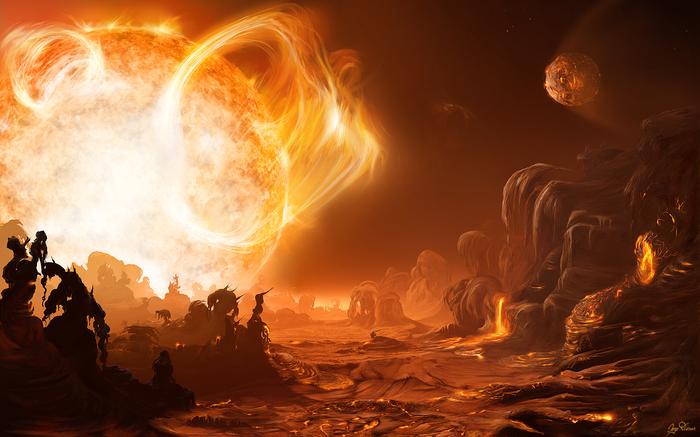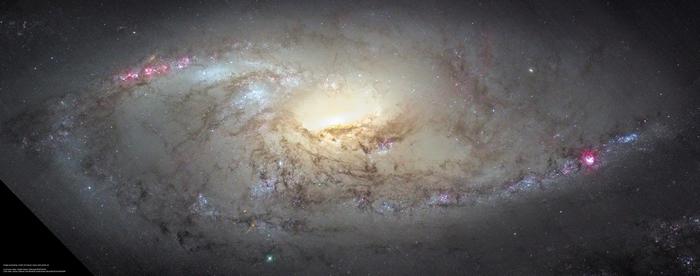In the Center of the Omega Nebula
From NASA APOD:
In the depths of the dark clouds of dust and molecular gas known as the Omega Nebula, stars continue to form. The above image from the Hubble Space Telescope’s Advanced Camera for Surveys shows exquisite detail in the famous star-forming region. The dark dust filaments that lace the center of Omega Nebula were created in the atmospheres of cool giant stars and in the debris from supernova explosions. The red and blue hues arise from glowing gas heated by the radiation of massive nearby stars. The points of light are the young stars themselves, some brighter than 100 Suns. Dark globules mark even younger systems, clouds of gas and dust just now condensing to form stars and planets. The Omega Nebula lies about 5000 light years away toward the constellation of Sagittarius. The region shown spans about 3000 times the diameter of our Solar System.
Sunrise on Gliese 876d
From NASA APOD:
On planet Gliese 876d, sunrises might be dangerous. Although nobody really knows what conditions are like on this close-in planet orbiting variable red dwarf star Gliese 876, the above artistic illustration gives one impression. With an orbit well inside Mercury and a mass several times that of Earth, Gliese 876d might rotate so slowly that dramatic differences exist between night and day. Gliese 876d is imagined above showing significant volcanism, possibly caused by gravitational tides flexing and internally heating the planet, and possibly more volatile during the day. The rising red dwarf star shows expected stellar magnetic activity which includes dramatic and violent prominences. In the sky above, a hypothetical moon has its thin atmosphere blown away by the red dwarf’s stellar wind. Gliese 876d excites the imagination partly because it is one of the few extrasolar planets known to be in or near to the habitable zone of its parent star.
M106 Close Up
From NASA APOD:
Close to the Great Bear (Ursa Major) and surrounded by the stars of the Hunting Dogs (Canes Venatici), this celestial wonder was discovered in 1781 by the metric French astronomer Pierre Mechain. Later, it was added to the catalog of his friend and colleague Charles Messier as M106. Modern deep telescopic views reveal it to be an island universe: a spiral galaxy around 30 thousand light-years across located only about 21 million light-years beyond the stars of the Milky Way. Along with prominent dust lanes and a bright central core, this colorful composite image highlights youthful blue star clusters and reddish stellar nurseries that trace the galaxy’s spiral arms. The high resolution galaxy portrait is a mosaic of data from Hubble’s sharp ACS camera combined with groundbased color image data. M106 (aka NGC 4258) is a nearby example of the Seyfert class of active galaxies, seen across the spectrum from radio to X-rays. Energetic active galaxies are powered by matter falling into a massive central black hole.


